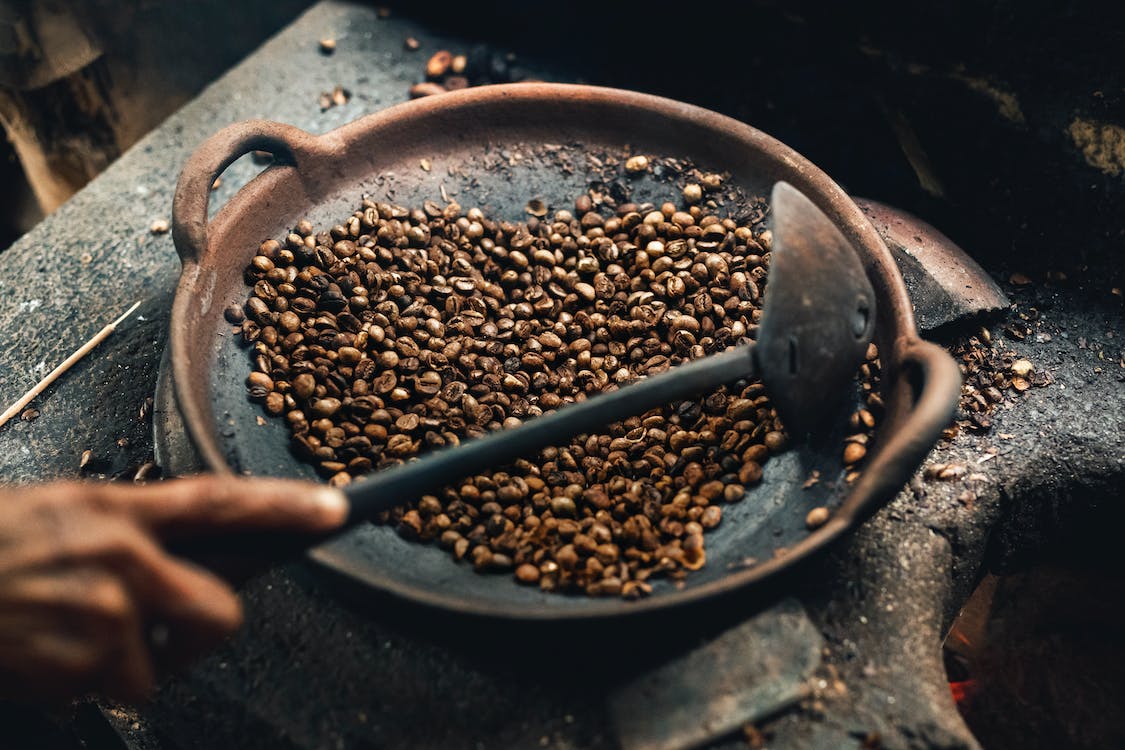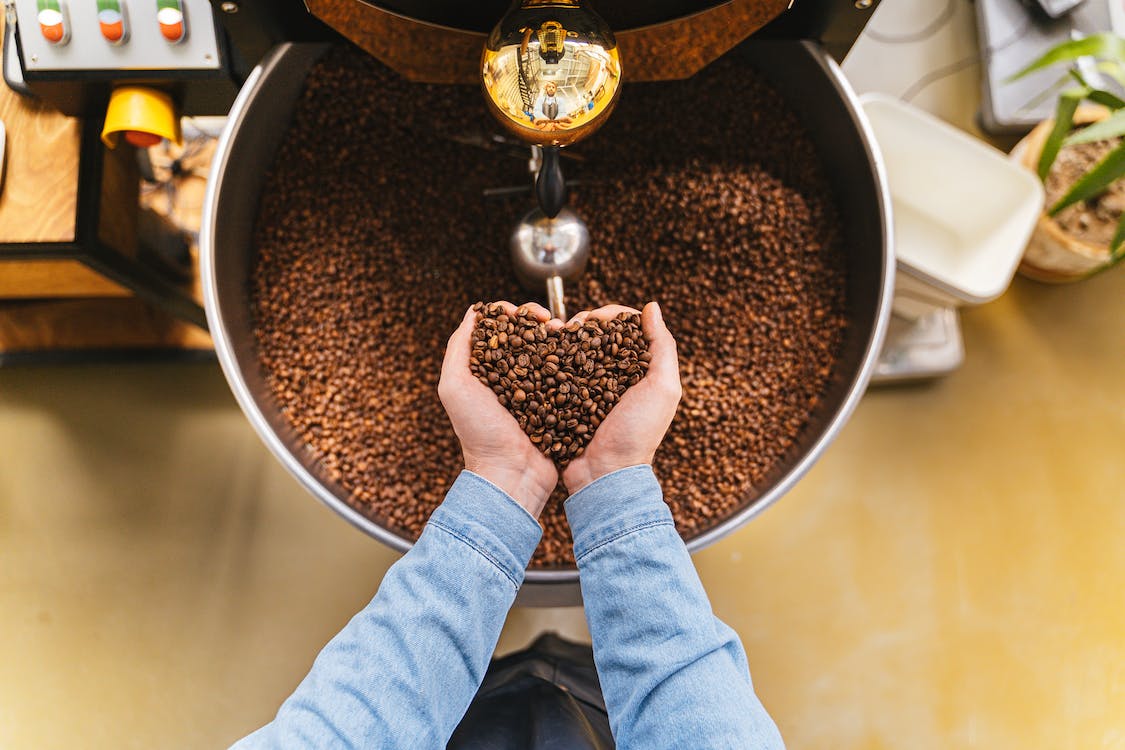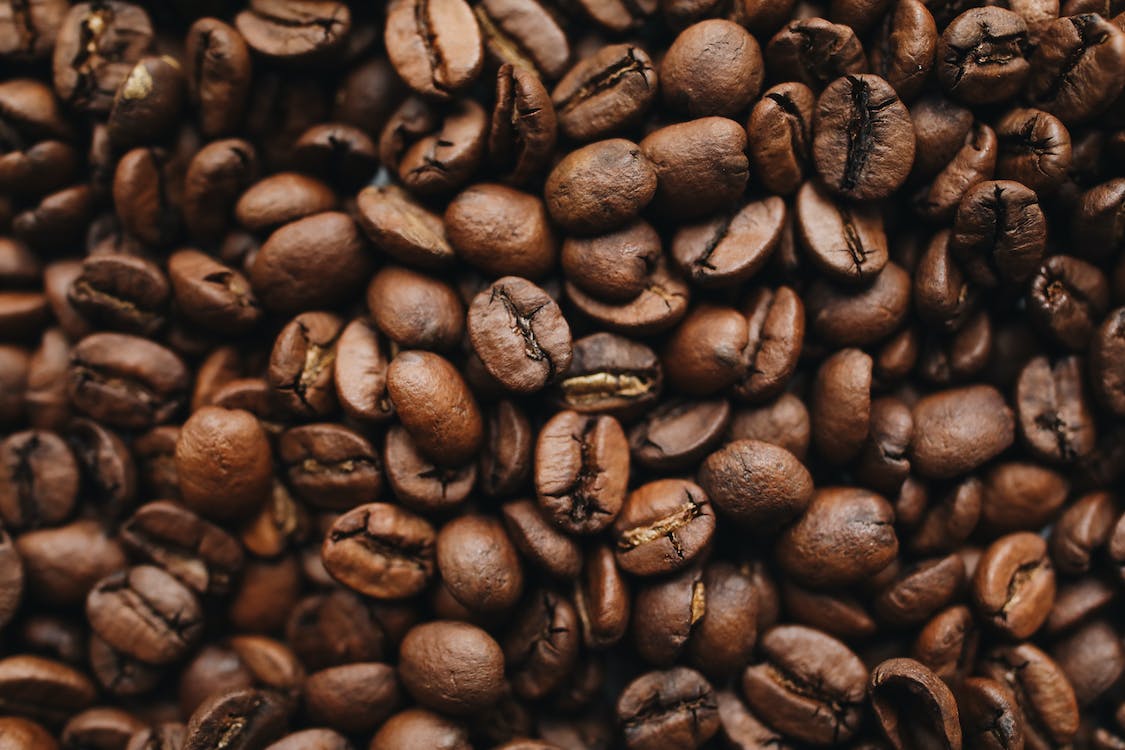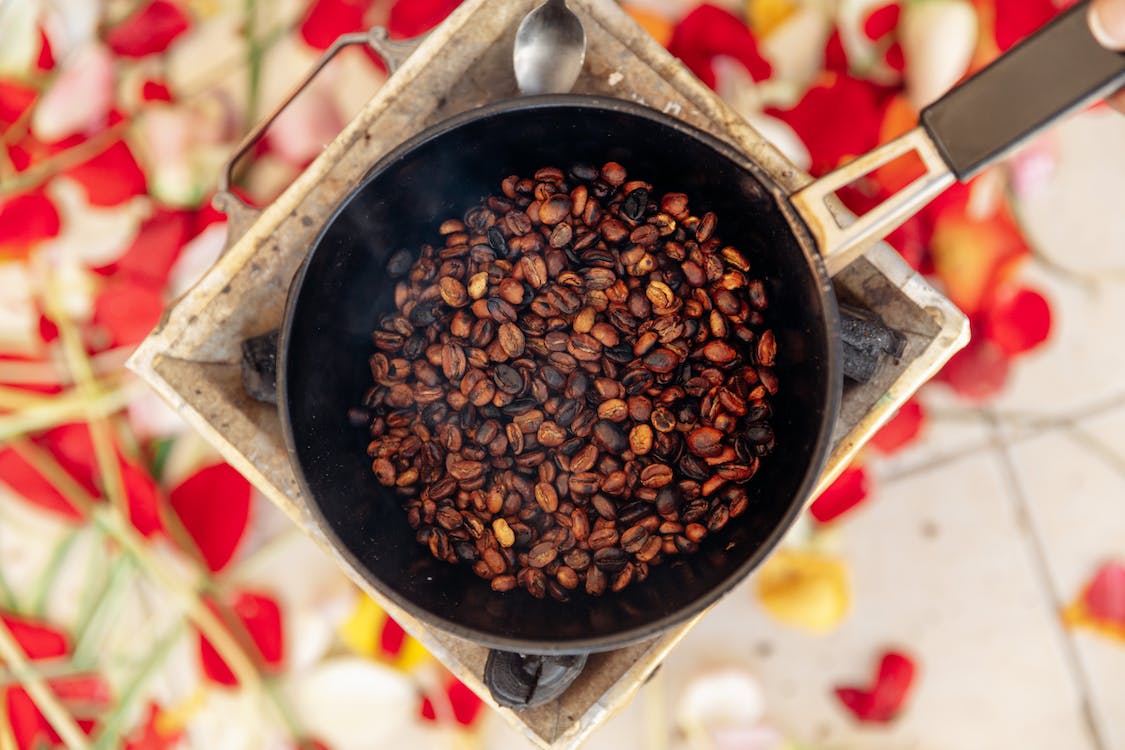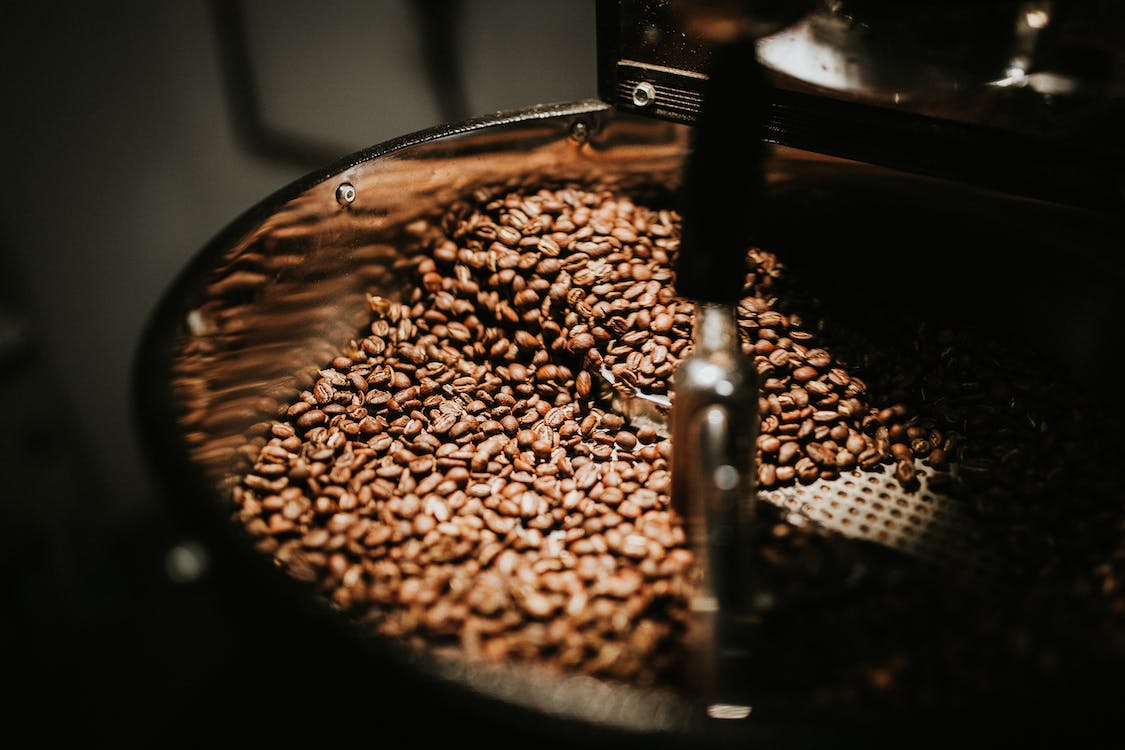Coffee, being one of the most beloved beverages in the world, owes its success to the laborious yet delicate process of roasting coffee beans. The first crucial step in coffee production begins here where the fusion of various flavors and aromas happens by transforming green and unroasted coffee beans into aromatic and flavorful beans that we grind and brew. Imagine, before roasting, green coffee beans don’t smell like coffee at all, but instead have a grassy aroma.
However, when we roast coffee beans, we develop around 800-1000 different aroma compounds that can create various flavors of coffee. [1] Because of this, many have studied and practiced the art and science of roasting coffee beans, and you can too even in the comfort of your home! In this guide, we will teach you the basics of coffee bean roasting as well as the different kinds of coffee roasts that you can try.
The Stages of the Roasting Process
Before we get into equipment-specific methods and the types of coffee roast profiles, it’s important to take a quick look at the general stages of the roasting process for us to understand what really goes on, as well as some certain terms that you might encounter later on. [2]
- Setting the temperature – To heat up coffee beans, the widely accepted temperature range for roasting is between 350°F and 500°F, though this can change based on the roasting technique you use.
- Agitation or continuous stirring of beans – It’s critical to keep your coffee beans moving during the roasting process. Constant stirring makes sure that the heat is evenly distributed, producing a consistent roast.
- First Crack – You’ll hear an audible crack 3 to 5 minutes into the roasting process. This is the first crack, signifying that your beans have reached a light roast, which is perfect for white coffee. This is the shortest amount of roasting time necessary to change the beans. If you want medium to darker roasts, continue roasting while maintaining agitation.
- Second Crack – You’ll hear the second crack after a few more minutes, signifying a medium roast. Beyond this stage, roasting the beans will cause them to burn and render them useless. However, you can still reach a dark roast by reducing the temperature or heat. Monitor the beans’ color as dark roast beans are typically very dark brown to nearly black with a bit of surface oil.
- Cooling Down – The cool-down phase of coffee preserves the desired taste profiles, and guards against over and under-roasting, and bitterness. Additionally, it helps in removing the chaff, improves storage capacity, and prepares the beans for grinding and brewing.
- Removal of the Chaff – Chaff, or the papery, dry husk of the coffee bean, is released when coffee beans are roasted. In order to separate and remove the chaff from the beans and prevent it from remaining on the beans or in your coffee, cool the beans in a metal colander or on a cooling tray.
3 Types of Coffee Roast and How to Do Them
There are three coffee roast profiles you can achieve in roasting coffee beans – light roast, medium roast, and dark roast, all of which have unique flavors. Let’s take a quick look at what these are and how to achieve these types of coffee roasts: [3] [4]
1. Light Roast –
With light roast beans being roasted for the least amount of time, it is considered to have the most caffeine and acidity. These beans are lightly roasted to bring out their natural attributes without overpowering them, giving them a light brown color and no apparent oil on the surface. Because of this they frequently have floral, citrus, and fruity or tea-like aromas and flavors. Its common names include New England, Half-City, or Cinnamon roast coffee.
Achieving a light roast requires good control and timing. You must roast the beans to temperatures between 356 to 401°F, just after the first crack to preserve the beans’ rich flavor.
2. Medium Roast –
Medium roast coffee is considered a flexible and balanced option. These beans, which have a medium brown color and no surface oil, are roasted for a little bit longer than light roasts. It has a nice acidity that is less pronounced compared to light roasts. The tastes also frequently feature a fusion of nutty, chocolatey, and caramel undertones. Its common names include City, Regular, or American roast coffee.
To achieve a medium roast, continue roasting for a few more minutes just before you hear the second crack. Ideally, coffee beans are roasted in temperatures between 410 to 428°F.
3. Dark Roast –
Dark roast coffee is known for having a strong and powerful flavor but has the least acidity among the three. These beans have been heavily roasted to bring out deep, roasted, and smoky flavors. They have a dark brown to nearly black hue and visible surface oils. Compared to lighter roasts it brings out aromas like bittersweet chocolate, roasted almonds, and caramelized sugars. Its common names include French, Espresso, Turkish, Italian, Dark French, or Heavy roast coffee.
To achieve a dark roast, beans must be roasted a few minutes after the second crack with temperatures ranging between 464 to 482°F. You should also see plenty of oil on the beans.
3 Roasting Methods You Can Try
Now that we have discussed the stages of roasting and identified the different types of coffee roast that we can choose from, we can now select our roasting method based on our available equipment and budget. Steps are provided for each but also keep in mind the general stages of the roasting process mentioned earlier: [2]
1. Pan/Grill Method –
This is the most budget-friendly method since many of us have pans or grills at home. However, a thick uncoated pan made of cast iron or steel is preferred to maintain the flavor. While it’s fast and convenient, it can get very smoky and you may also have to exert extra effort in getting the correct temperature. Here are the steps:
- Ensure proper ventilation and activate exhaust fans as the roasting process can generate much smoke and create overwhelming indoor odors.
- Place the pan on medium heat with the recommended temperature of around 450°F.
- Add a thin layer of beans to the pan, enough for easy and continuous stirring.
- Listen for the first crack after 4-5 minutes. This indicates your beans are on the light roast. After 6-7 minutes they would be medium roast.
- Transfer beans to a colander, stirring and shaking them to cool them out, and remove the chaff easily.
2. Oven Method –
Another popular alternative for roasting beans, you won’t need any additional purchases or struggle with getting the right temperature. However, it can be slower than other methods and can get quite smoky so make sure to have proper ventilation. Here are the steps:
- Preheat oven to 500°F and adjust as needed depending on your roasting preferences.
- Ensure proper ventilation and activate exhaust fans as the roasting process can generate much smoke and create overwhelming indoor odors.
- Spread beans on a tray with a sheet of baking paper underneath, and place on the middle oven shelf.
- Listen for the first crack after 5-7 minutes. This indicates your beans are on the light roast. The second crack indicating medium roast would be after about 1 minute.
- Transfer beans to a colander, stirring and shaking them to cool them out, and remove the chaff easily.
3. Home Coffee Roaster Method –
If you have one available or enough finances to buy one, getting a coffee roaster can do a better job at roasting than other alternatives. It is simple to clean but can be bulky for some. Here are the steps:
- Ensure proper ventilation and activate exhaust fans as the roasting process can still generate much smoke and create overwhelming indoor odors even with a coffee roaster.
- Activate the roasting machine, add the beans, and follow the instructions.
- Listen for the first and second cracks. Time for this may vary on your machine so monitor it carefully.
- Transfer beans to a colander to remove the chaff easily.
Conclusion
Mastering the art of coffee bean roasting combines both patience and intuition. Whether you’re roasting coffee beans in a pan or an expensive roasting machine, the main principles of the roasting process still remain: to pay attention to details, monitor the roasting process, and listen to the auditory cues through the cracking of beans. Now, go get roasting!
References
[1] Coffee roasting basics: Developing flavour by roasting. (n.d.). Paulig – Barista Institute. https://www.baristainstitute.com/blog/sampo-latvakangas/april-2022/coffee-roasting-basics-developing-flavour-roasting
[2] Durovic, J. (2023). How to Roast Coffee Beans At Home for Beginners. Home Grounds. https://www.homegrounds.co/how-to-roast-coffee-beans/
[3] MacDonnell, K. (2023). 4 types of coffee roasts (Explained with images). Coffee Affection. https://coffeeaffection.com/types-of-coffee-roasts/
[4] Kersey, J. (2021). Understanding Different Coffee Roasts – A Beginner’s Guide. Hermanos Colombian Coffee Roasters. https://hermanoscoffeeroasters.com/blogs/blog/understanding-different-coffee-roasts-beginners-guide

